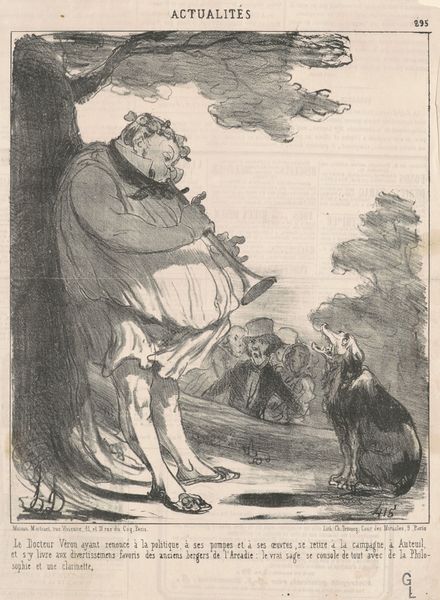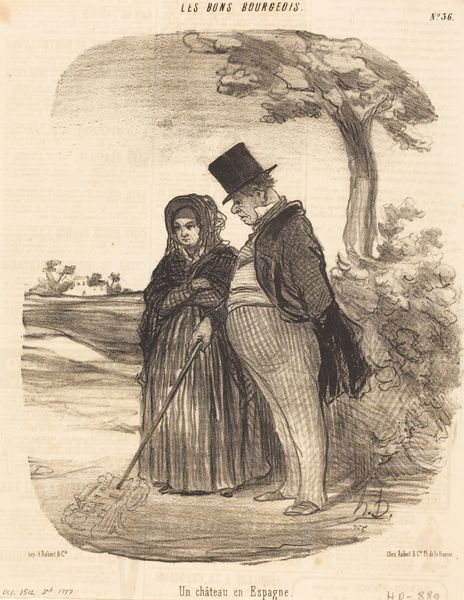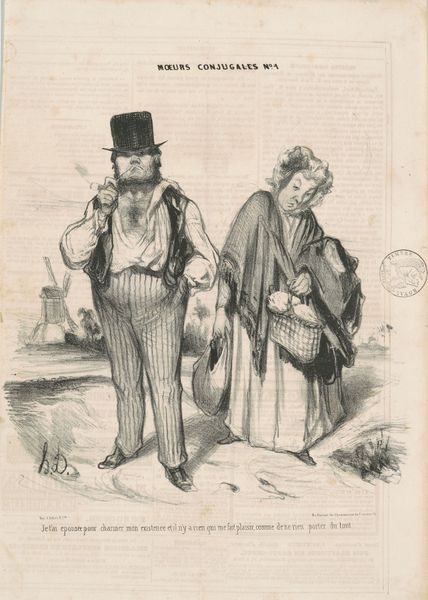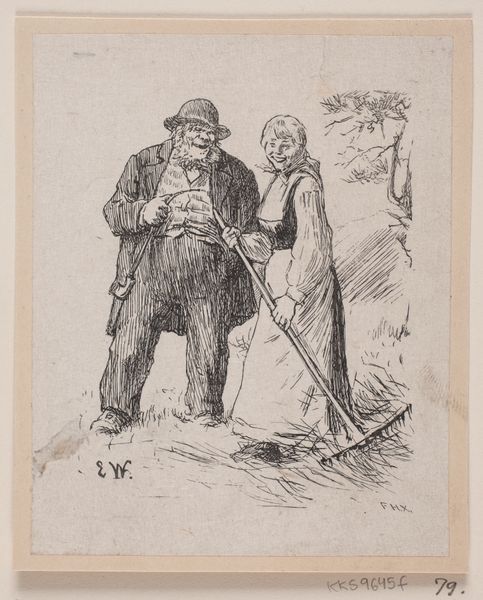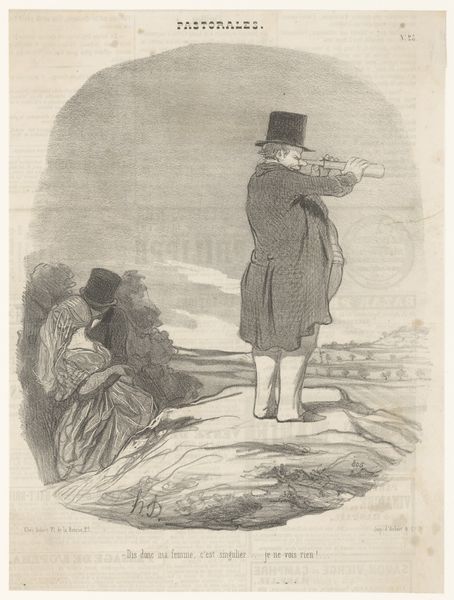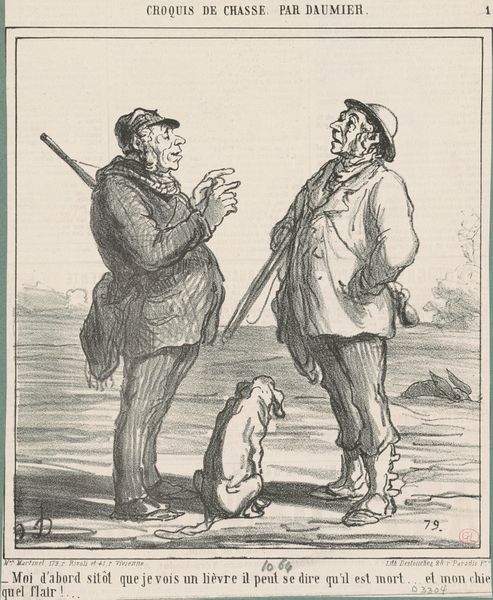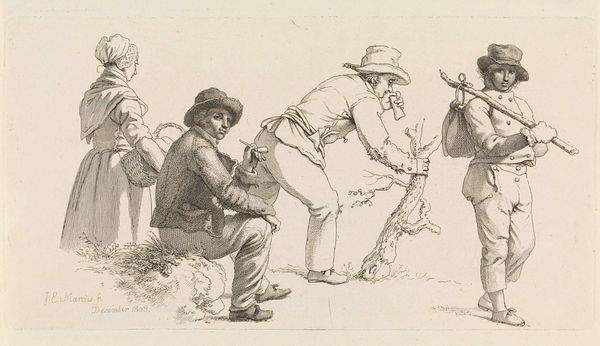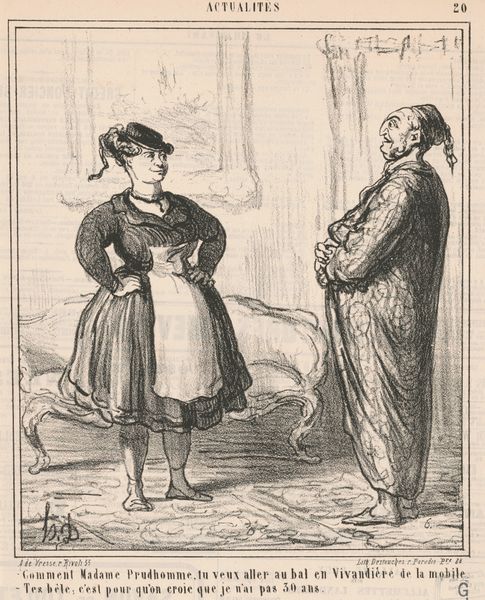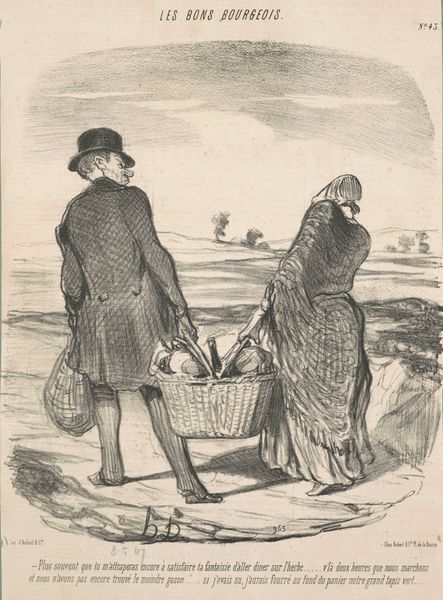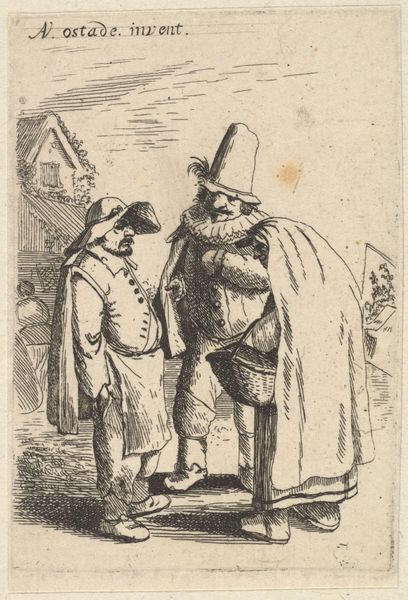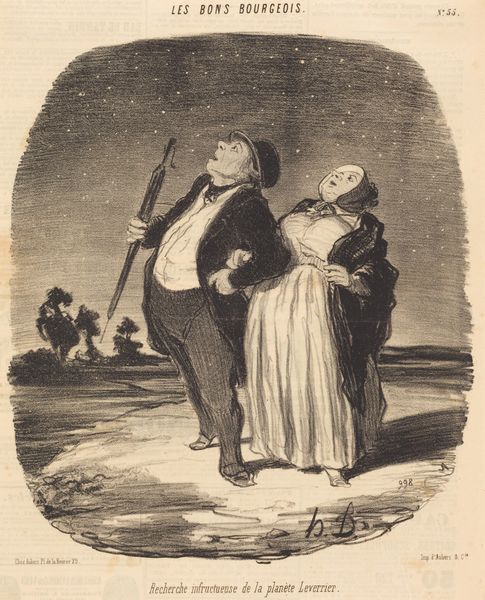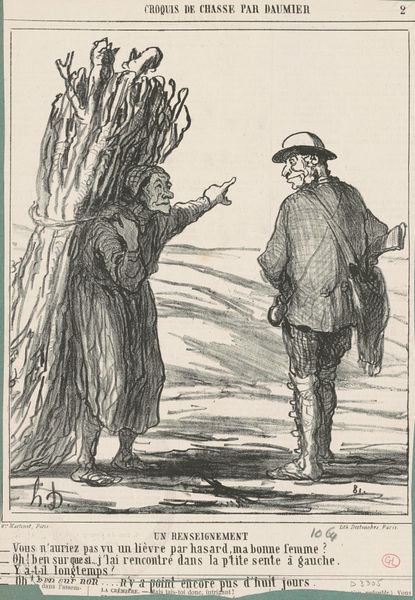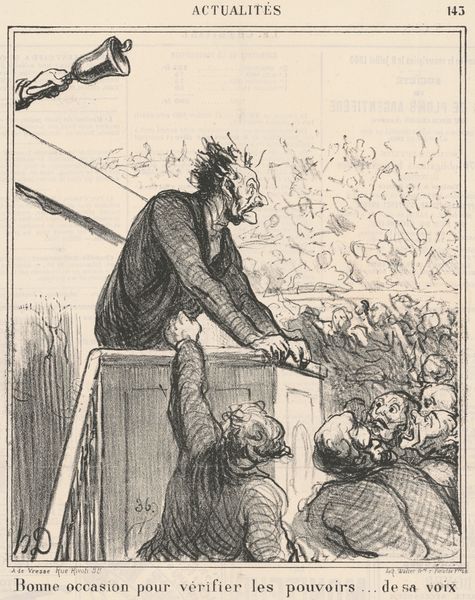
Le roi des potirons recevant les hommages de ses sujets 25 - 1865
0:00
0:00
Copyright: National Gallery of Art: CC0 1.0
Honoré Daumier created this lithograph, whose title translates as "The King of Pumpkins Receiving Homage from His Subjects," sometime in the mid-19th century. Daumier was a master of social commentary, and in this image, we see a well-fed bourgeois couple depicted alongside enormous pumpkins, as if they were royalty. The print was produced in France, a nation undergoing rapid social and political change at the time. The July Revolution had taken place a few decades earlier, but the bourgeois class maintained its power. Daumier worked for the magazine Le Charivari, and it was through this institution that his art could reach a wide audience. He used caricature to criticize the pomposity and self-importance of the bourgeoisie. His work offers a window into the social tensions of the time. The meaning of this image is, of course, contingent on its historical context. To understand it better, we can consult archives of magazines such as Le Charivari and delve into historical accounts of 19th-century France. It’s in this way that we can truly appreciate the role of art as a reflection of its social and institutional context.
Comments
No comments
Be the first to comment and join the conversation on the ultimate creative platform.
